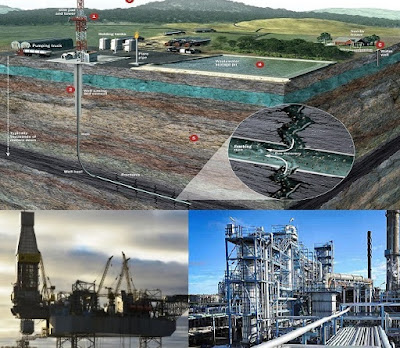Oil is one of the most important raw
materials that we have. Every day there are a hundreds of things which are used
that are made from oil or gas. Also, oil and gas are important because of the
job opportunities they provide to many people. Ten out of thousand people work
in gas as well oil industries.
How is oil and gas formed?
- Both Gas as well as crude oil is found underground.
- If you study well, most of the world is covered by sea. The sea further contains tiny animals and plants. These tiny animals and plants are referred to as planktons. They get their energy to live and multiply it from sunlight. When they die they go under the surface of the bottom of the sea
- The planktons which die millions of years ago are the source for today's oil and gas
- The Dead Sea creatures get
buried by sand and mud at the bottom of the sea. It is said that
the sun's energy gets stored in the bodies of the dead creatures as well plants. The dead bodies later start decaying. - From over a million of years the dead animals and plants have been buried deeper and deeper. The squashed and solid creatures turn into oil and gas.
- The force and temperature of deep, underground turns the chemicals of decaying animals and plants into crude oil and gas.
How
do we get oil and gas out of the ground?
According to Philip Moufarrige oil and gas both get trapped in pockets
underground such as where the rocks are folded into an umbrella shape.
Oil and the gases can move through the rocks with the gaps between the grains.
They further move upwards from the source rock where they can be formed. When
they meet a cap rock, the oil and gases get trapped in it. A well is drilled so
crude oil as well as other liquids can travel the bore hole. Finding a gas and
oil trapped deep underground drilling is way too complicated and also very
expensive. It can cost about a million
of pound to drill.
How
are oil and gas transported?
Usually, oil and gas are found far away or under
the sea. Further, they are transported to an oil refinery through a pipeline or
tanker. Crude oil is found in places like jungle, deserts or the arctic. They
are transported through the pipelines by the rail, road, boats along canals and
rivers.

